Bird photography experience with the Olympus E-M1 Mark II
Equipped with two Olympus OM-D E.M1 Mark II bodies I started the new year and my main interest was to test them for my purpose. My focus hereby was not so much anymore the comparison between DSLR and MFT, pixel peeping or checking all the technical spec promises from Olympus marketing.
I was much more interested to test the practical usability around wildlife photography and specifically capturing birds against the former version of the M1.
Because last year during a trip to Spain to shoot vultures, i recognized some issues with the contrast based autofocus that made me struggle to focus with changing background situations. I was searching for improvements on this.
First tests at the lake of Constance in wintertime where we have lots of migrating birds around, the first results came out very promising.
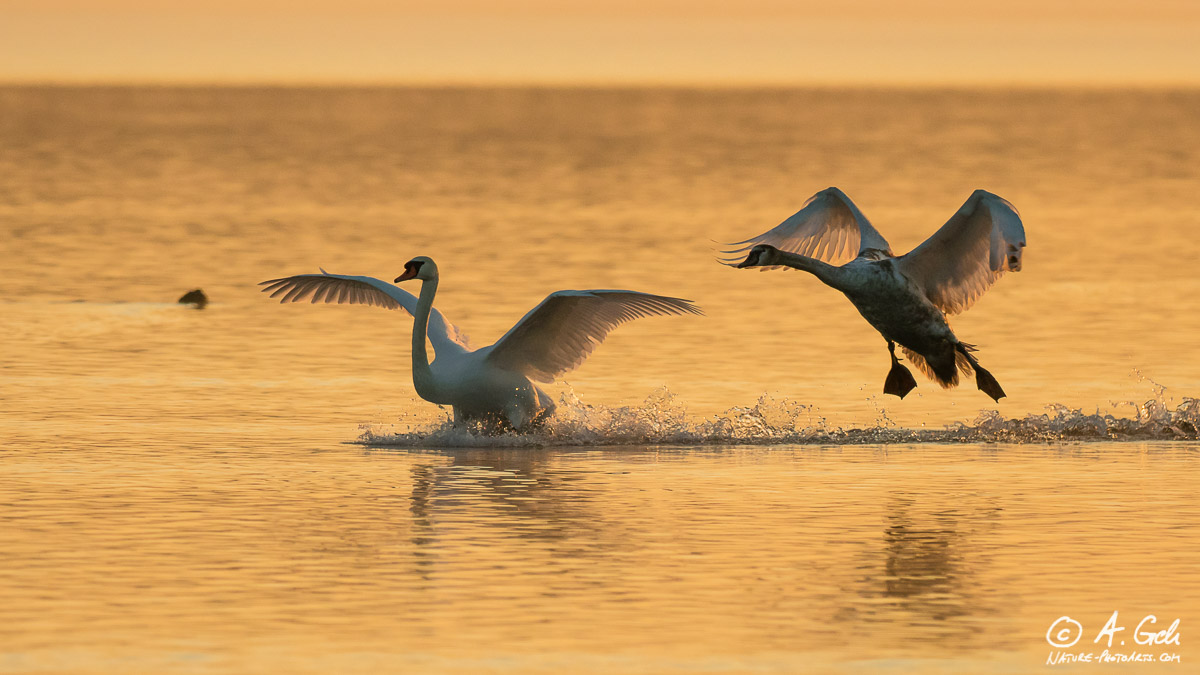
OM-D E-M1 Mark II; M. ZUIKO DIGITAL ED 300mm 1:4.0 IS PRO; 1/3200s, f/4.0, ISO 800
O.k. I needed to go deeper with my tests and therefore i planned a trip to Sweden close to the polar circle to meet with my friend Conny Lundström hoping for some golden eagle and small birds close-up photos and after that to a specific place in the Swiss alps for bearded vultures.
Additional to the specific bird situations I was interested in testing the cameras, lenses and power behavior on low temperatures, because I am planning a longer trip in September 2017 to Svalbard, Greenland and Iceland where I need to trust the gear.
Weather in north Sweden was not as cold as I expected this time, but anyway I had days with -15°C and the cameras had to stand temperature gradient of more than 30°C from front lens to the back of the body while I was sitting in the hide or outside for hours far below 0. Both was totally no problem and the gear was perfect in function.
On some small detail i have seen that the Olympus engineers are really practical thinkers. The new batteries are delivering enough power even in cold conditions that you can work with 2 of them during a shutter intensive day.
But also the battery plastic box is well designed and has a mark on one side of the box that you can use to separate full or empty ones very easily. Great little feature! Who knows the problem changing the batteries with hurry and grabbing the wrong one out of the bag losing valuable time?

Let’s go to the bird specific situations
Unfortunately the golden eagles were not very cooperative this time. Because of the too warm weather for this season they came down for eating only very few times. During 5 days waiting in the hide I had only once the chance for some close-ups in very weak light conditions.
But what i have seen immediately as a big advantage against the other systems was the possibility to shoot without any noise. Every photographer knows these situations, when a rare moment occurs all waiting cameras around you start a loud Ragadagadagadagadagadaga… Wild animals start to become nervous. Me in this situation: ______________________ silence and 80 pics more on the flash disk… A big advantage of system cameras!
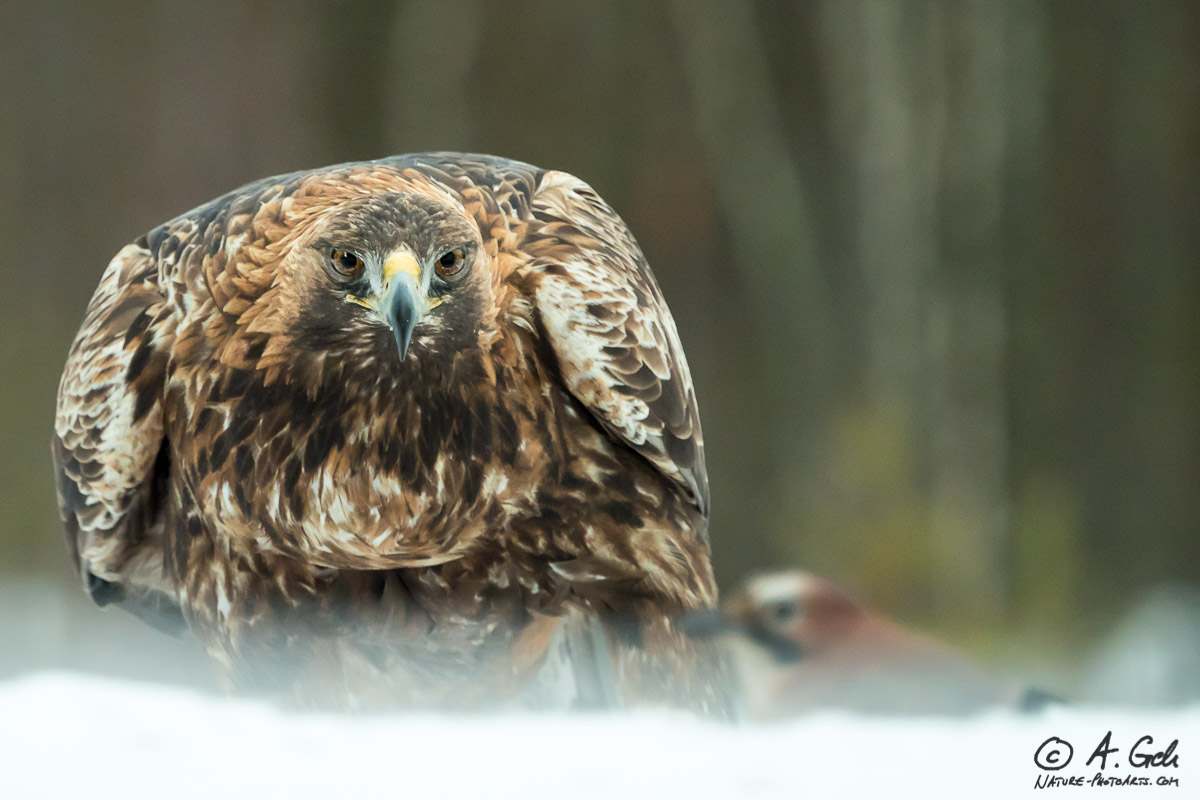
OM-D E-M1 Mark II; M. ZUIKO DIGITAL ED 40-150mm 1:2.8 PRO + MC-14; 1/160s, f/4.0, ISO 3200
Most of the time i was waiting for the eagles. Therefore I started experimenting a lot with all the small birds in front of the hide. Autofocus is working very fast and precise on the small birds even with high contrast backgrounds on the same level as i was used to it with my former DSLR gear. But now I have additional advantage that i can use most of the sensor frame for composition because of the well distributed 121 cross type focus pixels.

Left: OM-D E-M1 Mark II; M. ZUIKO DIGITAL ED 40-150mm 1:2.8 PRO; 1/40s, f/2.8, ISO 2500
Right: OM-D E-M1 Mark II; M. ZUIKO DIGITAL ED 300mm 1:4.0 IS PRO; 1/100s, f/4.0, ISO 4000
A group of bull finches were escaping all few minutes just to come back again. That was a good opportunity to test the ProCapture function what I did over hours with several settings. My excitement grew from round to round!
Every bird photographer knows all the f… situation waiting for a long time for THE moment, when the Great crested grebe is diving to capture its beak touching the waterline or the start of a falcon spreading its wings after sitting for hours with no action just to see afterwards that you missed the moment…
ProCapture is the answer to get THE moment because i had up to 14 photos before i released the trigger. Later on the computer, i was able to pick the ideal moment out of a sequence. Amazing possibilities!

OM-D E-M1 Mark II; M. ZUIKO DIGITAL ED 40-150mm 1:2.8 PRO; 1/1250s, f/4.0, ISO 3200 ProCapture
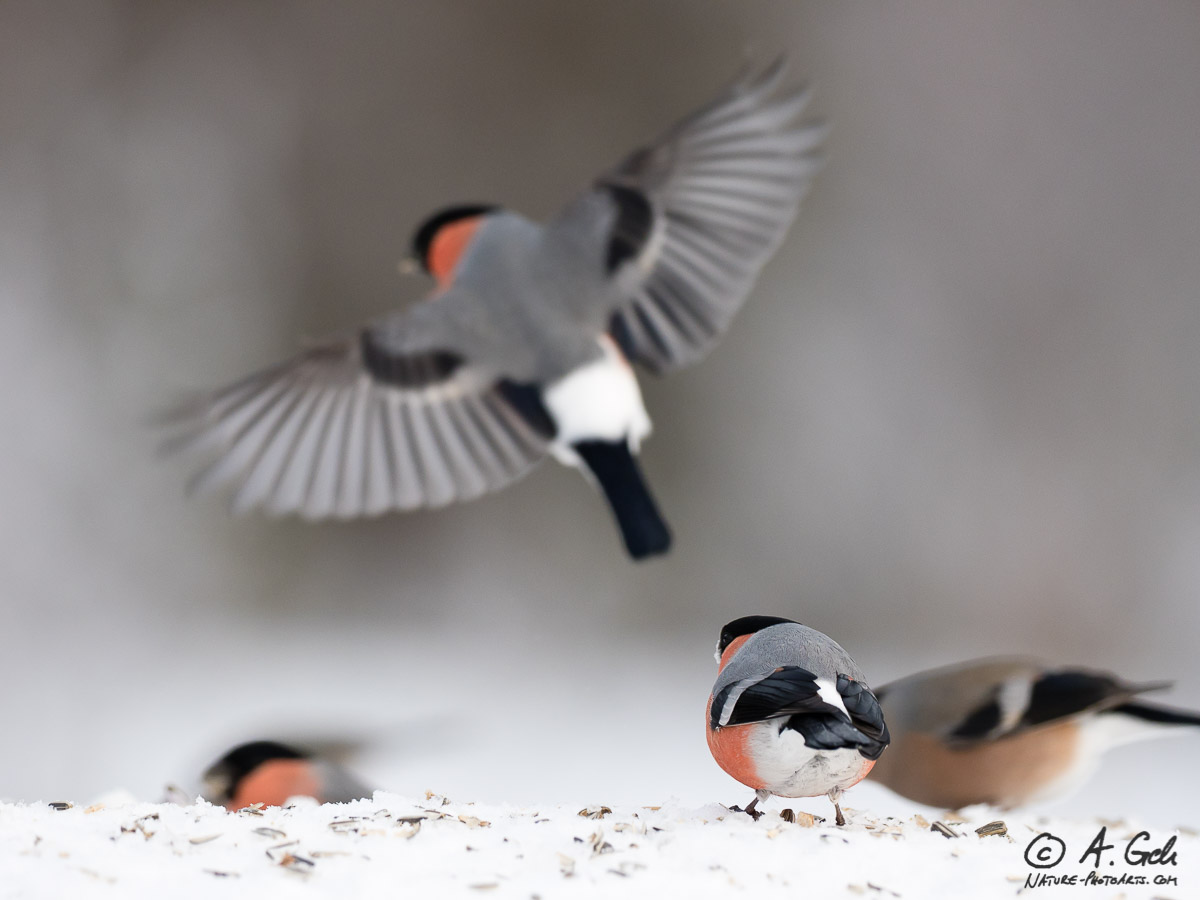
OM-D E-M1 Mark II; M. ZUIKO DIGITAL ED 300mm 1:4.0 IS PRO; 1/400s, f/4.0, ISO 1000 ProCapture
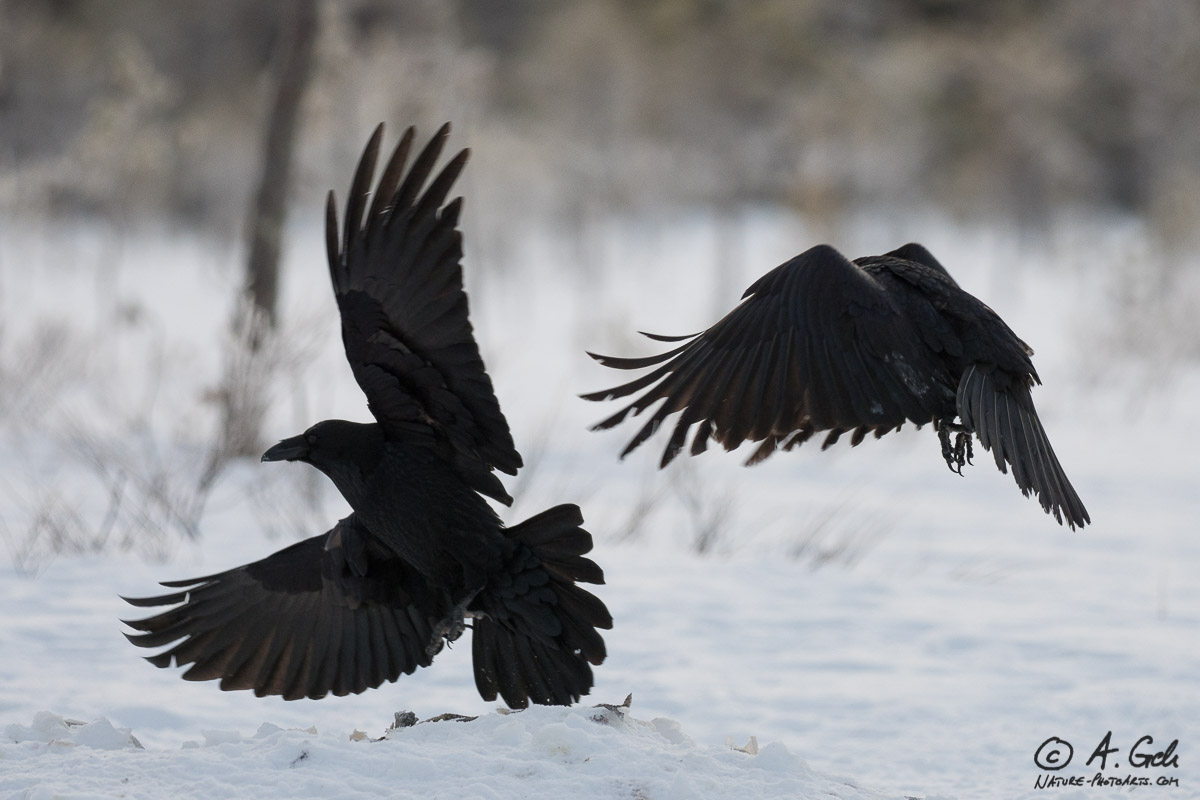
OM-D E-M1 Mark II; M. ZUIKO DIGITAL ED 300mm 1:4.0 IS PRO; 1/1000s, f/4.0, ISO 400 ProCapture
The improved sensor and the higher resolution offer additional freedom against the former version.
After my return from Sweden i just started to Swiss/Wallis to the Gemmigrad with Colleagues from the GDT regional group Switzerland to “hunt” bearded vultures. These rare and endangered animals seem to prefer circling on thermic winds in this region that gives the opportunity to photographers capturing photos of these mighty birds and with good luck the chance to shoot on horizontal level.
In such situations speed, endurance and a very precise working auto focus is crucial, because the vultures are moving always across very different backgrounds like rocks, snow, sky ore forest and they don´t wait for the photographer.
What I liked in comparison to all my colleagues with the big gear was the capability to work without tripod. With the 300mm PRO lens i can work a long time without getting tired and was able to react very freely on every changed situation. I like this much, also the fact, that I do not need to carry all the heavy stuff anymore on top of a mountain.
The first test came up: A first bearded vulture came to the scene and all cameras around me started to clicker in high speed. I shot within two hours about 1.500 photos.
C-AF mode with 18 pics/sec. is pretty fast. The CF was filled up much more then I was used to. Later on computer I was happy to see that the AF worked very fast and precise and was not disturbed by all the changing backgrounds with contrasty pattern. Much better than my first experience with the former M1. Check!
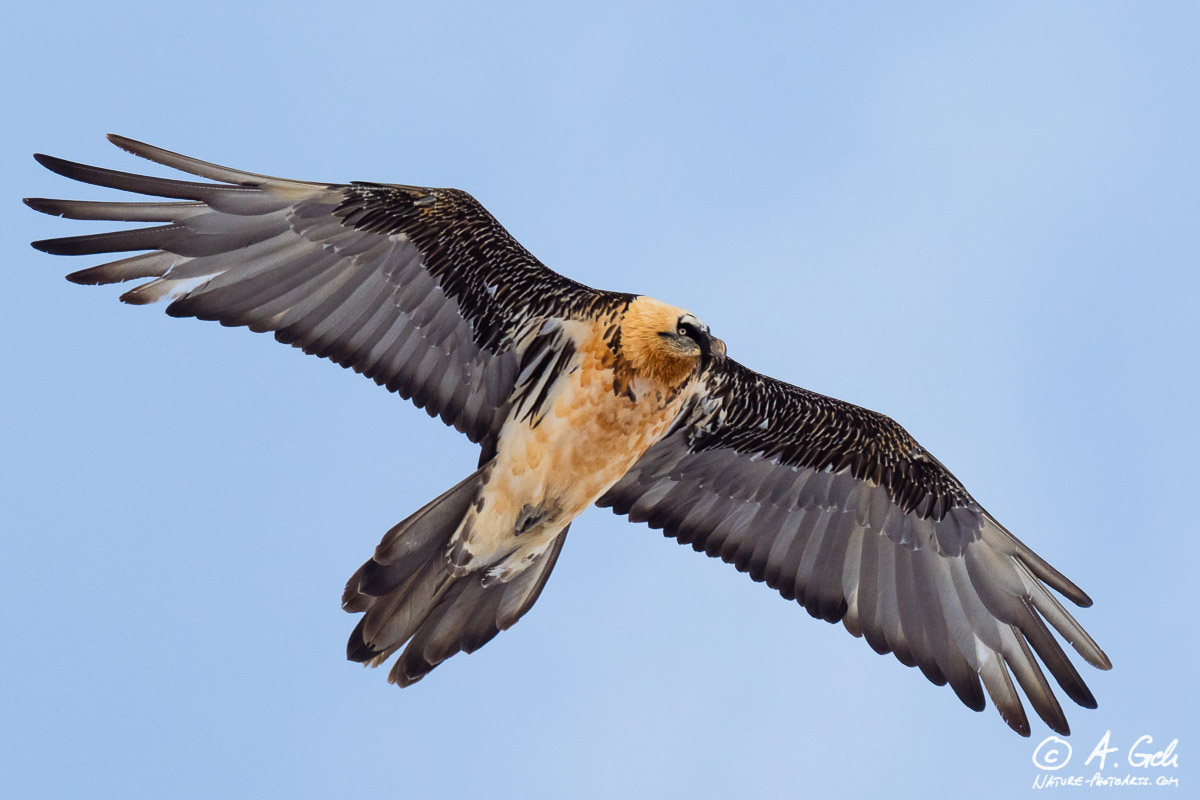
OM-D E-M1 Mark II; M. ZUIKO DIGITAL ED 300mm 1:4.0 IS PRO + MC-14; 1/3200s, f/5.6 + 3/10 Corr, ISO 800

OM-D E-M1 Mark II; M. ZUIKO DIGITAL ED 300mm 1:4.0 IS PRO + MC-14;
Left: 1/500s, f/5.6 +13/10 Corr, ISO 800 – Right: 1/1000s, f/5.6 + 3/10 Corr, ISO 800
Another very positive aspect was, that i could follow the animals through the electronic viewfinder without delay and loosing track while shooting in full speed (C-AF 18pics/sec.).
The refresh rate of 60 Hz and the higher power of the process seems to cover this situation without problems. And having histogram and the active focus field all time in view is also very helpful.
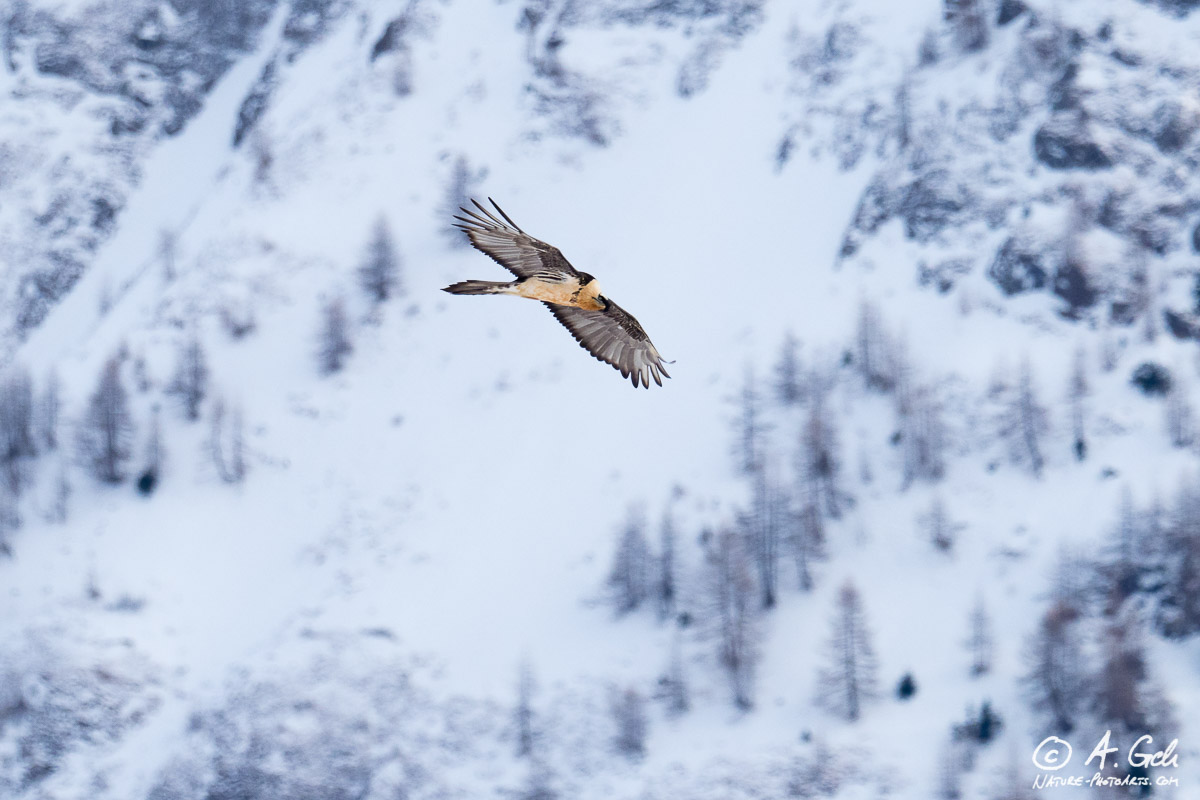
OMD E-M1 Mark II; M. ZUIKO DIGITAL ED 300mm 1:4.0 IS PRO + MC-14; 1/1600s, f/5.6 +1 Corr, ISO 800
Alpine choughs did follow us all the time. I was able to focus them very quick and precise and without tripod I was also very flexible to react.
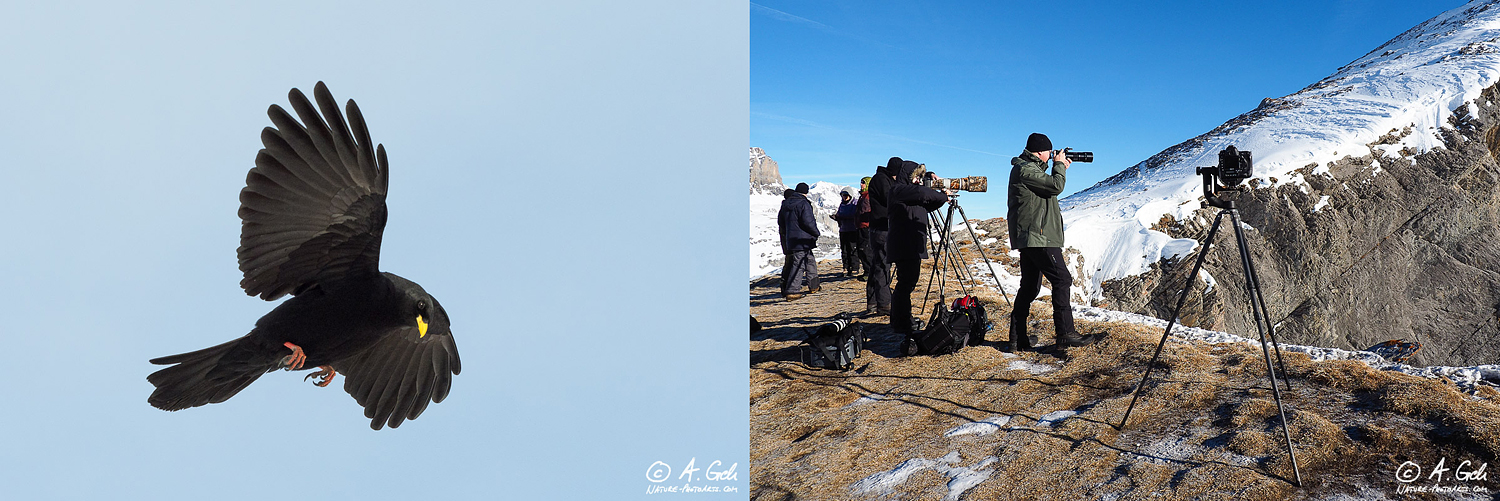
Left: OM-D E-M1 Mark II; M. ZUIKO DIGITAL ED 40-150mm 1:2.8 PRO; 1/3200s, f/5.6 + 3/10 Corr, ISO 640
Right : OM-D E-M5 Mark II; M. ZUIKO DIGITAL ED 12-100mm 1:4.0 IS PRO; 1/1600s, f/4.5 + 3/10 Corr, ISO 200
After the analyses of the day on my computer I was happy to see the good results with lots of very sharp pictures. In the night, I got out again to try some photos with LiveComposite capturing the clear night and sparkling sky. I love the possibility using the same gear for so much different facetts of nature photography.
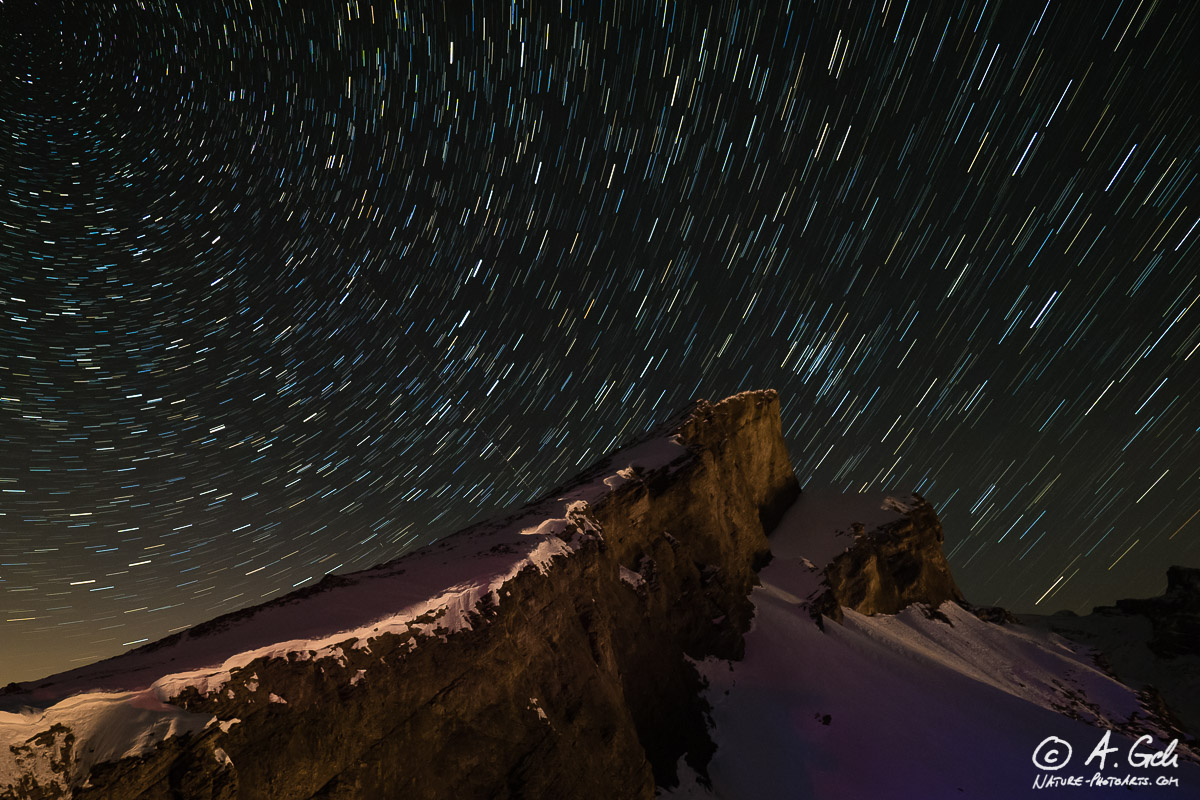
OM-D E-M1 Mark II; M. ZUIKO DIGITAL ED 7-14mm 1:2.8 PRO; 30s LiveComposite ca. 10 Min., f/2.8, ISO 1600
By comparing the results directly against the big high end DSLR flag ship gear of the two market leaders almost double in weight and triple in price i need to say that you can see an advantage of the full frame on higher ISO values and resolution in edge situations with 4 times more sensor area. Even Olympus is not able to overcome physics.
Pixel peeper will always find enough arguments against MFT. Everything pays its price.
But for me , this test tour made it clear without any doubt that the switch over to MFT was a very good decision and I can travel with a good feeling and trust on the Olympus OM-D E-M1 Mark II and the M.ZUIKO PRO lenses to Greenland or everywhere else around the globe.
No matter if a want to shoot action or calm scenes, lively birds, landscapes, details or star trails. I don´t need to care on technical limitations anymore and can fully focus on my creative ideas and composition.
Picture quality, power and weight is perfectly balanced for me now and I feel much more flexible than ever before. I am looking forward to my next photo tour.
JOIN OUR FACEBOOK GROUP
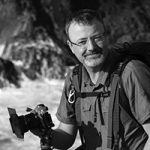
“I love nature, I love photography, I am a nature photographer.
Olympus Visionary and member of the GDT e.V. (German wildlife photographer association). I focus on real wildlife and pure nature to support nature conservation in my region and to enjoy it as a perfect balance to my business. My photos can be found in exhibitions, books, magazines and contests around the world.”





Matt Siler
November 26, 2018 @ 21:16
Tips on settings for BIF and Wildlife in motion?
Phyllis Burright
January 29, 2022 @ 22:46
What mode do you usually use for small birds? Manual, Shutter or Apeture priority? ISO auto??
Geh Andreas
January 30, 2022 @ 08:16
It depends, if they are sitting or flying. Sitting: Aperture Priority, ISO by choice, shutter Speed 1/125 or faster, AF-C small focus field. Flying: Shutter Priority, ISO Auto, Speed 1/1600, AF-C Tracking, group fields.